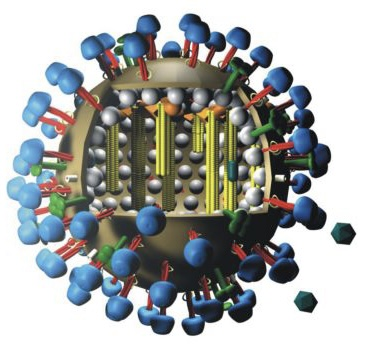A senior official from the US Food and Drug Administration (FDA) said today that its nationwide survey of retail milk has found remnants of H5N1 avian flu viruses in one in five samples, with the highest concentrations in regions where outbreaks in dairy cattle have been reported.
Donald Prater, DVM, acting director of the FDA Center for Food Safety and Applied Nutrition (CFSAN), shared the new findings with state health officials who took part in a scientific symposium on H5N1 hosted by the Association of State and Territorial Health Officials (ASTHO). The results come in the wake of earlier findings this week from more limited FDA sampling, along with similar findings from a smaller set of samples tested by a lab that’s part of the National Institute of Allergy and Infectious Diseases Centers of Excellence for Influenza Research and Response (CEIRR) Network.
Prater reiterated that the FDA hasn’t changed its assessment that the nation’s milk supply remains safe. So far, early work on milk samples that were positive for H5N1 fragments haven’t found any viable (potentially infectious) virus.
He said, however, that the FDA still has a long list of data gaps to fill, including identifying the risk of infection to humans via oral consumption and validating that existing pasteurization methods can inactivate H5N1.
Got it. Its safe not safe.
"We found the virus in the milk, we don’t know if pasteurization kills it, and we don’t know the infection risk from oral consumption.
But it’s definitely safe to drink the milk!"
1 in 5 cow milk have the virus. 0 in 5 soy, oat, almond, rice milk.
That’s not milk
milk, noun
1
a: a fluid secreted by the mammary glands of females for the nourishment of their young
b(1): milk from an animal and especially a cow used as food by people
b(2): a food product produced from seeds or fruit that resembles and is used similarly to cow’s milk
vegan milk
dairy-free milks
see also almond milk, coconut milk, oat milk, soy milk2
a liquid resembling milk in appearance: such as
a: the latex of a plant
b: the contents of an unripe kernel of grainIncorrect, it is milk by common definition, it’s just plant based instead of mammalian based milk. It’s not identical to cows milk discussed, but seemingly here that would be the point of their recommendation as it would lack the viral components. Also if you’re gonna get hoity toity about the definition of milk you should consider that the species of cattle for mammalian based milk has never had labeling requirements in the US which is quite disengenous as even the textbook scientific definition of ‘milk’ does not stipulate it come from cattle, thusly what you know as milk is actually most likely “Bos taurus milk” which would then require distinction as such in every conversation, which would only get more complected if your local dairy doesn’t raise the most common dairy cattle breed. 🤷♂️



